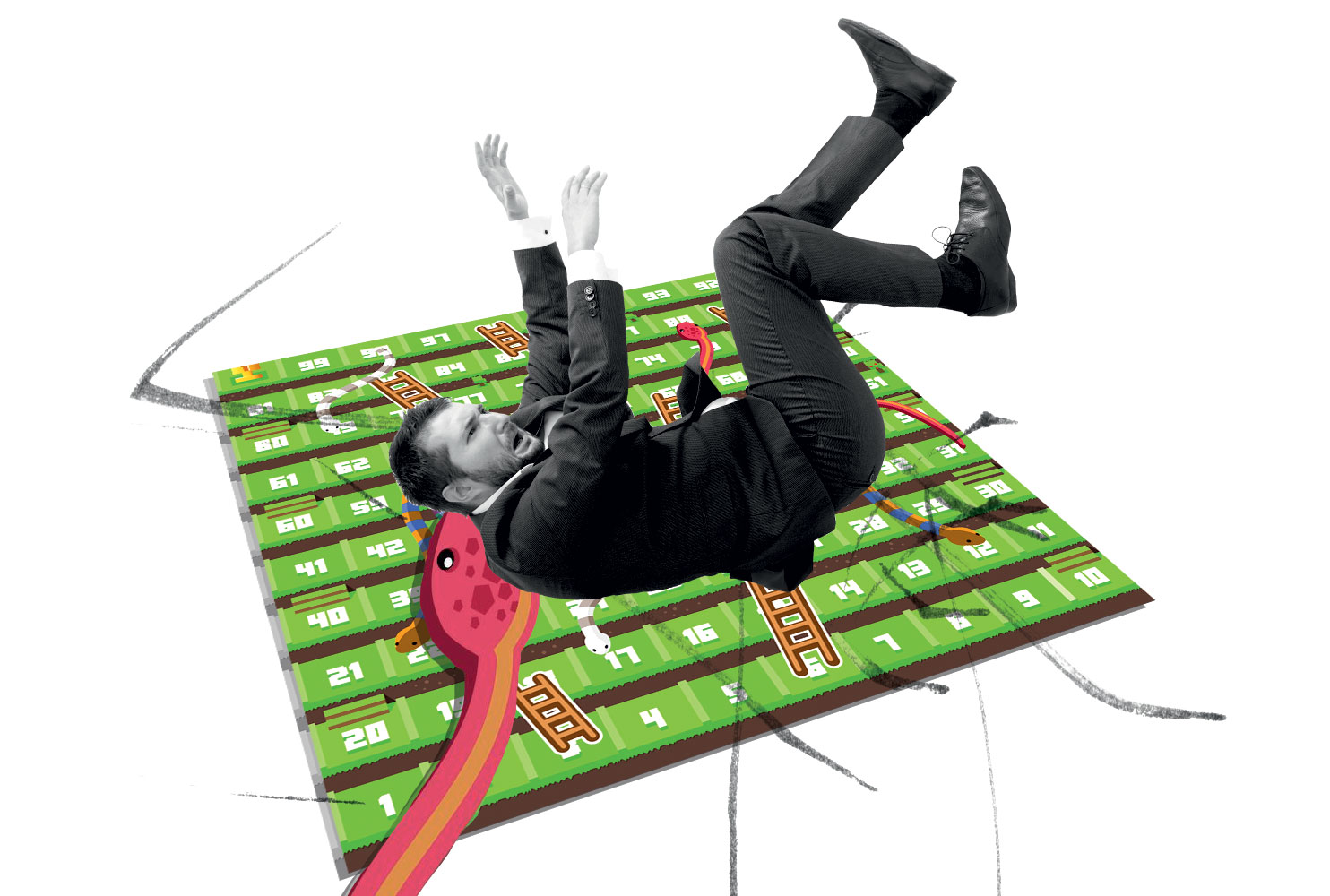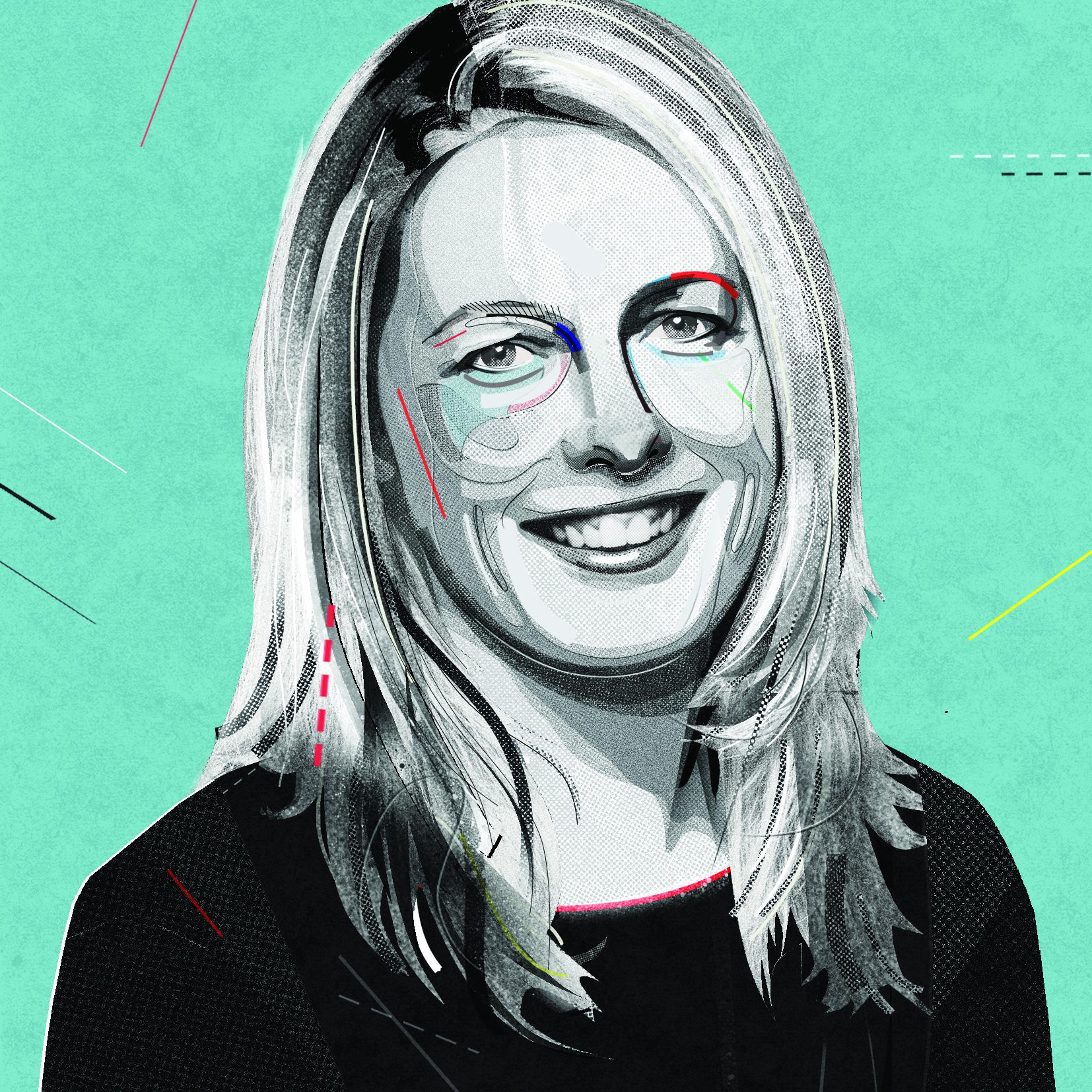4 ways to go freelance
Is a long run-up better, or can a push help? We explore 4 paths into self-employment.

Enter any decent co-working space or trendy coffee shop and you'll see them. Armed with a laptop, mobile and very little else, an army of freelancers is quietly revolutionising the creative industry.
But while the the design industry has never looked better, the Design Council's 2018 Design Economy Report concluding more than half of respondents expect the demand for design-related skills to increase in their sector or industry in the next three years, making the leap to a life of freelance can be incredible daunting. The fear of the unknown can be crippling: will you be able to find work, find work that will really add to your graphic design portfolio, pay the bills, stay motivated? Are you too old – or too young? How should you prepare?
Here, we take a look at four routes into freelance life. We speak to designers and illustrators who have taken these paths and harvest their pro advice to ensure you enter the world of freelance successfully – whichever route you choose.
01. Go freelance straight from education

According to Dave Chaplin, CEO and founder of freelancer organisation Contractor Calculator, graduates are increasingly setting up on their own after university. In a competitive industry, working freelance can offer more immediate employment than waiting for the perfect studio role, and with clients increasingly recognising the benefits of a younger, fresh perspective, there are plenty of opportunities out there – if you know where to look.
For Dutch art director, illustrator and designer Mart Biemans, the prospect was so appealing that he quit his studies before graduating. He'd been freelancing since the age of 14 and felt he wasn't learning enough at school. "The career route I took isn't something I would advise, unless you're extremely confident that you can make it work," he warns. "I struggled a lot after quitting school. Some months I didn't have any projects to work on and no money was coming in."
I didn't have the luxury to be picky and simply wanted to be able to make a living from what I love doing
Mart Biemans
In the early days, Biemans took on every job he could. "From designing key visuals to doing business cards for local bars, I didn't have the luxury to be picky and simply wanted to be able to make a living from what I love doing," he says.
At first, he found work by emailing companies to see if they needed a designer ("I was happy if I got a reply from one in 10 companies"). He was also extremely active on platforms like DeviantArt and Behance: Biemans wasn't just creating and sharing art, but also giving feedback to others – and listening to the feedback he received. The more followers he garnered, the quicker big brands like Pepsi, Diesel and Universal Music Group started noticing him – and from that moment on, it was an upwards spiral.
Get the Creative Bloq Newsletter
Daily design news, reviews, how-tos and more, as picked by the editors.
One problem with taking this route into freelance life can be a lack of experience on the legal side of things. Although most clients were kind, Biemans learned the intricacies of contracts, invoicing and NDAs the hard way. "Once a client didn't pay me because no contracts were signed," he recalls. "It's just a matter of learning from your mistakes. Don't let those events happen again."
It's very important to keep educating yourself. Things change so quickly
Guy Rodwell
Freelance designer Guy Rodwell agrees. He went freelance straight after college and advises understanding the tax system and fully researching the different options for setting up a business before making the leap. He's never been more busy but says the biggest hurdle he's still tackling is overbooking himself.
"I've had a brilliant time so far working for myself. But I often underestimate the time it takes to complete my work, and jobs and deadlines can quite easily stack up," he says, adding that an understanding of your limits as a freelancer is important.
He's right. Clients want to hire someone who will deliver brilliant results by the given deadline. They also want a designer with the right skills. Without access to the level of training you might receive in a studio, you need to find other ways to stay ahead. Rodwell recommends taking on smaller jobs to help learn new techniques or the basics of new software, and Biemans advises experimenting to keep your skills up to date.
"It's very important to keep educating yourself," he points out. "Things change so quickly. Programmes like Photoshop CC and Illustrator CC get amazing new features with almost every single update and you'd be a fool to keep doing the thing you've always done, instead of trying them out."
02. Quit your design job

One of the most sensible routes into self-employed life is to test the water first. Slowly taking on out-of-hours freelance work with the financial security of a full-time job enables you to experience freelance life first-hand and make an educated decision about whether it's right for you.
UK-based freelance illustrator Jack Daly took the plunge into self-employment after being approached by a New York-based agent, who offered to represent him. He'd been dabbling in illustration while working as a senior designer at Glasgow-based creative agency D8 and accepted the offer. After about six months of representation – and effectively working two jobs – he decided to go full-time freelance.
Before making the leap, his biggest consideration was ensuring he'd saved enough money to pay the bills for the initial months. "This is particularly important, as even if you've got commissions lined up right away, you won't necessarily see any money for one to three months," explains Daly, who's worked for a variety of clients, including Adele, Foreign Affairs Magazine and InVision. "Sure you can put 'pay within 28 days' in your terms, but it's still no guarantee."
After working with his agent for six months, he was confident he would have enough work coming in – but another key consideration was whether he would enjoy working alone at home. "I ended up taking a desk at a shared space run by Scottish studio Freytag Anderson," he says. "In the beginning, I actually traded them some design time for the desk, meaning I didn't have to worry about forking out cash while still establishing my freelance career."
Is there any preparation he would do now if he were to go freelance again? "I'd get a business account set up straight away. You get a separate debit card, so you can make any business purchases from the same account your invoices are paid into. You can then link that account to a service like FreeAgent to help manage your finances and make the dreaded tax return as pain-free as possible."
You need to be able to give full brain power to both your full-time job and the freelance work during the transition. I think that's the hardest bit
Caterina Bianchini
London-based designer and art director Caterina Bianchini initially hired an accountant when she went freelance – but ended up doing her own self-assessment. "I decided to get rid of him because I felt it was really important to understand expenses, tax and national insurance," she explains.
She works for clients including Nike, Red Bull and Topshop, and recommends building up your freelance work gradually, in evenings and weekends, before doing it full-time. "Just make sure you understand that you need to be able to give full brain power to both your full-time job and the freelance work during the transition," she advises. "I think that's the hardest bit. But it does allow you to see just how much work you can achieve when you have to do it. With freelance, I was on limited time, so I had to make sure I was working at my highest potential."
Bianchini says her biggest challenge is continuing to get new, bigger clients. "It's good to make sure your work is constantly getting better, and growing in skill and technique," she says. "I'm super on top of my emails. I try to get back to people within a day. There's so much talent and competition, you have to make sure you give the client requests the time they need. Also, make sure whatever you spend, you keep receipts for, or whatever you buy online, you file away your invoice for. This is something that took me a while to get used to."
"Don't be a wallflower, advises Daly. "Having a social media presence is huge. Platforms such as Behance, Twitter, Dribbble and Instagram are essential tools in building your profile and winning new work. When you've created new work, share it on all of your platforms. I've found the more you share, the more commission enquiries you receive. This is particularly satisfying when it's one of those self-initiated projects you dragged yourself out of bed to create that leads directly to a lucrative new commission."
03. Survive unexpected redundancy

Not everyone is lucky enough to enjoy a smooth, planned transition into freelance life. Unexpected redundancy or other unforeseen circumstances can send you into a tailspin – but there are some advantages to this route into freelance life: namely, that the decision to go freelance is made for you.
"I spent so much time scared that I wouldn't be able to go freelance, that I never bothered," says Vancouver-based freelance designer Kevin Moore, aka Soft Surrogate. He was laid off from his job at a print shop with a two-week notice period shortly before his first wedding anniversary. "I panicked,"he admits. "There wasn't enough time to scrimp and save enough to start my own company. But rather than get depressed about it, I had to face it full-on."
Almost instantly, he was able to take on a "ton of work" because his days were entirely freed up. "My turnaround times got way faster, and as a result I got more clients. I hustled doing 12 and 16-hour days just promoting my work, finding new clients and doing whatever work would come my way. I was able to save a little ‘safety net' of funds within the first couple months. I just tightened my belt and put a bunch of my initial pay cheques into savings accounts and into my estimated income tax for the remainder of the year."
Always keep an up-to-date CV and portfolio. Shit happens. You never know when you'll need it
Dave Milburn
Whatever your circumstances, it's always useful to be prepared for a career move. "Always keep an up-to-date CV and portfolio,"advises Newcastle upon Tyne-based creative director Dave Milburn. "Shit happens. You never know when you'll need it."
Milburn was forced into freelance life in 2007, during the credit crunch. Initially he found work in other agencies around the area, where he had friends, filling in for holidays or helping when there was a deadline to meet. "The rate of pay was initially good, but the North East gradually dried up as more of the large agencies shut down and were replaced by start-ups and one-man bands."
Milburn is now creative director at an agency and freelances on the side. The biggest lesson he's learned is to 'multi-zone'. "Freelancing usually means a different dynamic and creative environment every day,"he explains, "so you need to learn to stack from different creative angles, and adapt to a different ethos and workflow."
Moore stresses that learning the business side of self-employment is crucial. "What kills so many creative entrepreneurs is that they love to be starry eyed, hippy, creative types and just ignore the business end of things. I've almost fallen victim to that same way of thinking – I just want to draw all day."
He also advises not being a jerk. "I try and take a breather when I get an email that rubs me the wrong way. If you respond like a jerk, you lose that client and whoever they tell forever. Take a day. Take a deep breath. Respond kindly and use your communication skills to maybe show the client why their suggestions might not work for what they want. I've said it 100 times: 75 per cent of my job is convincing clients that I'm right."
Moore says his biggest regret is not being laid off sooner. "I thought I loved where I worked before – but the truth is, I would come home and bitch and complain all the time. I guess I needed that push off the edge to show myself I could land."
04. Change your career entirely

Melbourne-based designer and occasional publisher Duncan Blachford took another route entirely into freelance life. Previously a musician, he was working in admin at a book publishing company when the firm's designer was knocked off his bike and broke both arms.
Blachford became his hands. "I was happy as a typesetter," he recalls, "and didn't even think about becoming a designer for a long time. Over the last 24 months, my creative interests started shifting from music to design – and it's quickly developed into an obsession."
Although Blachford had designed his own record covers and gig posters for 20 years – and was increasingly being asked to create work for others – he'd only recently realised that design could be a career option. He'd just started applying for jobs when he was made redundant.
"I didn't have a folio, so I started creating new work for each job I went for," he says. "I had to work fast and in a range of styles and contexts. Suddenly design seemed like a super-creative field."
Blachford was also watching a lot of tutorials, and the confidence restrictions he'd previously felt disappeared. "I read books by Robert Bringhurst, Jost Hochuli, Norman Potter, Paul Rand, Michael Bierut, Experimental Jetset, Jan van Toorn, Jan Tschichold, Joseph Müller-Brockman – this was all rewiring my brain, and I realised there was a rich design history with deep social and political aspects to it. I was listening to Debbie Millman's Design Matters and whatever else I could find online. Then I enrolled in a Master of Communication Design course at RMIT."
I'm hoping the dust will settle but freedom and chaos are intertwined. It's pretty wild.
Duncan Blachford
The biggest challenge he's faced, he says, is his age, and that he's only worked in-house. "Even though my mid-30s doesn't feel old at all, I have a feeling I'm seen as too old for junior roles, but can't land a mid-weight or senior position in a studio either as they all want studio experience," he explains. "Going freelance seems the way to go. Maybe after a few years I'll be able to move into a studio, or start one with some friends."
It's early days still: his first clients were friends and workmates, then friends of friends and now complete strangers from different walks of life. He also subcontracts for other designers, and recently started taking some freelance shifts in larger cultural institutions.
"Between family life, work and study, life is pretty hectic and I rarely switch off," he admits. "I'm hoping the dust will settle but freedom and chaos are intertwined. It's pretty wild. I'm still green but I'm super-excited and I've found that people do want really creative solutions. And I don't mind doing dry stuff that pays the bills, too."
What's his best advice? Just dive right in. "I started late but immersed myself and it feels like a new creative world has opened up. Ideas are flowing and I feel up for any challenge."
Illustrations: Michelle Thompson
This article originally appeared in Computer Arts magazine. Subscribe here.
Read more:

Thank you for reading 5 articles this month* Join now for unlimited access
Enjoy your first month for just £1 / $1 / €1
*Read 5 free articles per month without a subscription

Join now for unlimited access
Try first month for just £1 / $1 / €1

Julia is editor-in-chief, retail at Future Ltd, where she works in e-commerce across a number of consumer lifestyle brands. A former editor of design website Creative Bloq, she’s also worked on a variety of print titles, and was part of the team that launched consumer tech website TechRadar. She's been writing about art, design and technology for over 15 years.
